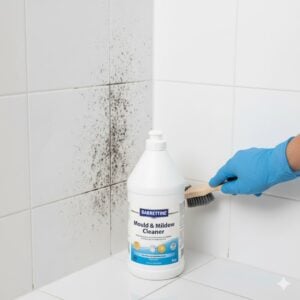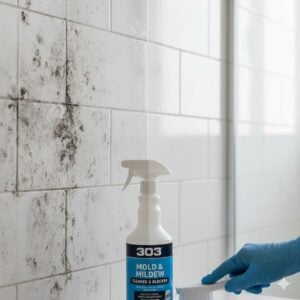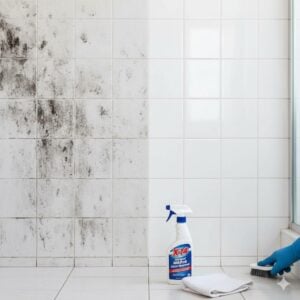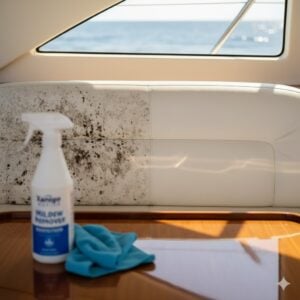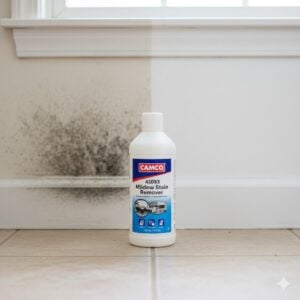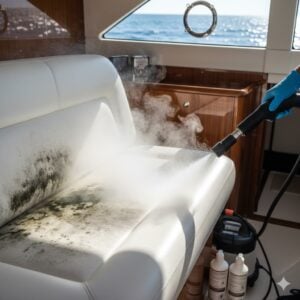Understanding mold services is crucial for maintaining a healthy, safe home environment. Mold, prevalent in many households, poses risks to both your home’s structure and your health, especially in humid climates like the UAE. This article, “Top 7 Mold Services Every Homeowner Should Know About,” provides a comprehensive guide to essential mold services. From detection to prevention, we’ll explore key strategies to tackle mold effectively, helping you protect your home and ensure a safe living environment.
[lwptoc]
Table of Contents
Toggle1. Initial Mold Inspection and Assessment
Beginning with an initial mold inspection and assessment is critical in the fight against mold in your home. This essential first step involves a detailed examination to detect both visible and hidden mold. Experienced professionals meticulously inspect high-moisture areas like bathrooms, kitchens, and basements, as these are common breeding grounds for mold. However, spotting visible mold is just part of the process. The real key lies in uncovering the sources of excess moisture – be it leaky pipes, inadequate ventilation, or condensation issues – as these are the root causes of most mold problems. Addressing these underlying factors is vital for effective and lasting mold remediation.
In addition to physical inspection, air quality testing plays a significant role. This is because mold spores, when airborne, can pose serious health risks, especially to those with allergies or respiratory conditions. By testing the air, professionals can gauge the severity of the mold issue and assess the potential health risks, as detailed in 8 Critical Signs of Mold Damage and How to Act Fast.
The outcome of this comprehensive inspection and assessment is a detailed report, outlining the extent of mold infestation and the moisture sources. This report is instrumental in planning the next steps, which may include mold removal and moisture control measures. It equips homeowners with the knowledge needed to make informed decisions about addressing their mold issues effectively.
This initial stage is not just about identifying the problem; it’s about setting the stage for effective solutions, as emphasized in 5 Essential Steps for Complete Mold Remediation Success. It lays the groundwork for creating a safer, healthier living environment, free from the hazards of mold.
2. Professional Mold Remediation
Professional mold remediation is a critical service for effectively tackling mold issues in your home. This process goes beyond simple cleaning; it involves a series of precise steps executed by trained experts to ensure complete removal and prevent future growth. Professional remediation starts with the application of specialized techniques to safely remove mold from affected areas. This includes the use of advanced equipment and products that are not typically available to the average homeowner.
One key aspect of professional mold remediation is the focus on safety. Mold can release harmful spores into the air during the cleaning process. Professionals are equipped with the necessary protective gear and follow strict safety protocols to minimize exposure risks, both to themselves and the occupants of the home.
Moreover, professionals are trained to identify different types of mold and understand their growth patterns. This knowledge is crucial in developing an effective remediation strategy that not only addresses the visible mold but also targets its root cause. For instance, if black mold is identified, specialists from Bio-On can employ specific techniques tailored for black mold remediation.
3. Advanced Mold Removal Techniques
Advanced mold removal techniques are essential in the modern approach to tackling mold effectively. These techniques go beyond traditional cleaning methods, employing the latest technology and methods to ensure thorough mold eradication. One of the key techniques used by professionals is the use of HEPA (High-Efficiency Particulate Air) filters. These filters are designed to trap and remove tiny mold spores from the air, significantly reducing the risk of airborne mold in your home.
Another advanced technique is the use of antimicrobial agents and fungicides. These substances are applied to affected areas to kill existing mold colonies and prevent new growth. Unlike regular cleaning products, these agents are specifically formulated to target mold at its root, ensuring a more lasting solution.
For tougher mold infestations, especially in hard-to-reach areas, professionals may use methods like soda blasting. This process involves blasting a baking soda-based medium onto moldy surfaces at high pressure. It’s an effective way to remove mold without damaging the underlying material, making it ideal for sensitive areas.
Thermal imaging is another cutting-edge technique in mold detection. It helps in identifying hidden moisture issues, which are common mold growth triggers. By pinpointing these problem areas, professionals can address the source of mold, rather than just treating the symptoms. Bio-On’s approach to mold inspection, which can be explored in more depth in their article on 5 Essential Steps for Complete Mold Remediation Success, often includes such advanced detection methods.
Moisture control techniques, such as improving ventilation and fixing leaks, are also part of advanced mold removal. These techniques focus on creating an environment where mold can’t thrive, as detailed in 7 Pillars of Mold Control: Protect Your Home Effectively.
In summary, advanced mold removal techniques are about combining specialized equipment, modern methods, and expert knowledge to provide a comprehensive solution to mold problems. By leveraging these advanced techniques, professionals ensure not only the removal of mold but also the prevention of its recurrence, contributing to a healthier and safer living environment.
4. Handling Mold Damage
Handling mold damage effectively is crucial in mitigating its impacts on your home and health. Mold damage can range from surface-level cosmetic issues to deeper structural problems. The first step in handling this damage is a thorough assessment to understand the extent of the impact. This involves checking not only the visible areas where mold is present but also inspecting for potential hidden damage within walls, floors, and ceilings.
Once the extent of the damage is assessed, the next step is to begin the restoration process. This includes removing and replacing any structurally compromised materials. In cases where mold has infiltrated porous materials like drywall or insulation, these materials will need to be completely removed and replaced to ensure that all mold spores are eradicated.
In addition to structural repairs, addressing the aesthetic damage caused by mold is also important. This might involve repainting surfaces or refinishing areas that have been affected. However, before any cosmetic repairs are made, it’s essential to ensure that the underlying mold issue has been fully resolved to prevent recurrence.
Another critical aspect of handling mold damage is understanding and rectifying the moisture problem that led to the mold growth in the first place. This could involve repairing leaky pipes, improving ventilation, or addressing humidity issues. For more in-depth information on identifying mold damage and the necessary actions, you can refer to the insights provided in 8 Critical Signs of Mold Damage and How to Act Fast.
Lastly, after handling the immediate mold damage, it’s important to take preventive measures to protect your home against future mold problems. This includes regular inspections and maintenance to catch any potential mold issues early on.
In summary, handling mold damage involves a comprehensive approach that includes assessment, structural and aesthetic repairs, addressing the underlying moisture issues, and taking preventive measures for the future. By thoroughly addressing each aspect of mold damage, you can ensure the longevity and safety of your home.
5. Mold Prevention and Control
Mold prevention and control are essential in maintaining a healthy living environment and safeguarding your home against future mold issues. Preventing mold growth starts with controlling moisture levels, as mold thrives in damp and humid conditions. Regularly inspecting your home for leaks and addressing any water damage promptly is key to preventing mold. This includes fixing leaky pipes, ensuring good ventilation in moisture-prone areas like bathrooms and kitchens, and using dehumidifiers in humid climates.
Proper ventilation plays a crucial role in mold prevention. Ensuring that your home is well-ventilated helps reduce moisture accumulation, a primary factor in mold growth. Simple practices like using exhaust fans in bathrooms and kitchens, opening windows to allow air circulation, and maintaining your HVAC system can significantly reduce the risk of mold.
Another effective strategy is to keep your home clean and dry. Regular cleaning, especially in areas prone to moisture, helps prevent mold spores from taking root. Pay attention to carpets, upholstery, and other fabrics that can retain moisture and become breeding grounds for mold.
For more specific areas, such as basements or crawl spaces, which are often susceptible to mold, applying waterproofing measures can be an effective prevention strategy. Additionally, using mold-resistant products like paints and building materials can provide an extra layer of protection, especially in areas exposed to frequent moisture.
Understanding the common causes and signs of mold can also aid in prevention. For detailed insights into identifying potential mold issues, 7 Pillars of Mold Control: Protect Your Home Effectively offers valuable information.
In conclusion, mold prevention and control involve a combination of moisture management, proper ventilation, regular cleaning, and the use of mold-resistant materials. By adopting these strategies, homeowners can significantly reduce the risk of mold growth and maintain a healthier living environment.
6. Mold Air Quality Testing
Mold air quality testing is an integral part of ensuring a healthy environment in your home, especially post-mold remediation. This process involves testing the air for the presence of mold spores, which can be harmful when inhaled, particularly for individuals with allergies, asthma, or other respiratory conditions. Professional air quality testing provides a detailed analysis of the air in your home, identifying not only the presence of mold spores but also their concentration levels.
This type of testing is typically conducted using specialized equipment that captures air samples from various parts of your home. These samples are then analyzed in a laboratory to determine the types and concentrations of mold present. The results from these tests are crucial in assessing the effectiveness of mold remediation efforts. They ensure that the air in your home is safe and meets health standards.
In addition to post-remediation testing, mold air quality testing can also be beneficial as a preventive measure. Regular testing helps detect early signs of mold growth, often before it becomes visible or causes noticeable health issues. This early detection can lead to quicker remediation actions and prevent larger, more costly problems down the line.
For homeowners who have undergone significant mold remediation, such as those outlined in 5 Essential Steps for Complete Mold Remediation Success, conducting air quality testing after the process ensures that all mold spores have been effectively removed and that the home is safe for habitation.
In summary, mold air quality testing is a vital service that provides peace of mind and ensures the health and safety of your home environment. Whether used as a preventive measure or as part of a post-remediation assessment, it plays a critical role in mold management and maintaining good indoor air quality.
7. Post-Remediation Restoration and Maintenance
Post-remediation restoration and maintenance are crucial final steps in the mold remediation process, ensuring that your home not only returns to its pre-mold condition but also remains protected against future mold issues. After mold has been effectively removed, it’s important to repair and restore any areas that were damaged or disturbed during the remediation.
Restoration can involve a variety of tasks, depending on the extent of the mold damage. This might include repairing or replacing drywall, repainting walls, and restoring flooring. In cases where furnishings and other personal items were affected, these may also need cleaning or replacement. The goal of this phase is to bring your home back to its original state, both in terms of structure and appearance.
Maintenance, on the other hand, focuses on preventing mold from returning. This includes regular monitoring of moisture levels in your home, ensuring proper ventilation, and keeping the home clean and dry. Simple practices such as using dehumidifiers in damp areas, fixing leaks promptly, and maintaining good air circulation can go a long way in preventing mold recurrence.
Additionally, it’s beneficial to have regular mold inspections, especially in areas that are prone to moisture. This proactive approach helps in catching potential mold problems early, before they escalate. For a comprehensive understanding of how to maintain a mold-free environment post-remediation, 7 Pillars of Mold Control: Protect Your Home Effectively provides useful guidelines.
In conclusion, post-remediation restoration and maintenance are essential to ensure the long-term success of the mold remediation process. They not only restore the beauty and functionality of your home but also safeguard it against future mold challenges, contributing to a healthier, safer living space.
Why Bio-On is the Ideal Solution for Mold Remediation
Choosing Bio-On for mold remediation offers several distinct advantages that make it the ideal solution for homeowners facing mold issues:
- Expertise and Experience: Bio-On’s team comprises seasoned professionals who bring years of experience to every mold remediation project. This expertise ensures that they can effectively handle a wide range of mold issues, from common household molds to more challenging infestations.
- Advanced Technology and Techniques: Bio-On utilizes state-of-the-art technology and advanced techniques for mold inspection, removal, and prevention. By staying abreast of the latest developments in mold remediation, Bio-On can offer more efficient, effective, and safe mold treatment solutions.
- Comprehensive Services: From initial inspection and assessment to post-remediation restoration, Bio-On provides a full spectrum of mold services. This comprehensive approach means that homeowners have a one-stop solution for all their mold-related needs.
- Customized Solutions: Understanding that every mold situation is unique, Bio-On tailors its services to the specific needs of each client. This personalized approach ensures that the mold remediation plan is effective for the particular type of mold and the specific conditions of the home.
- Focus on Safety and Health: Bio-On prioritizes the health and safety of its clients and their families. This is evident in their use of safe, non-toxic cleaning agents and adherence to strict safety protocols during mold removal.
- Proven Track Record: Bio-On has a history of successfully resolving mold issues for numerous satisfied customers, a testament to their effectiveness and reliability as a mold remediation service provider.
- Commitment to Customer Education: Beyond just providing services, Bio-On is dedicated to educating clients about mold prevention and maintenance. This commitment to customer education helps homeowners in maintaining a mold-free environment long after the initial service is completed.
In essence, Bio-On’s combination of expertise, advanced methods, comprehensive services, and a strong focus on customer satisfaction make it an exemplary choice for anyone seeking effective and reliable mold remediation services.
Conclusion of Mold Services
In conclusion, comprehending and employing top mold services is crucial for homeowners dedicated to preserving a healthy living space. From the initial detection to thorough mold remediation and proactive prevention strategies, these mold services play a pivotal role in effectively managing and combating mold challenges. Opting for a skilled and experienced mold service provider like Bio-On not only addresses existing mold issues but also fortifies your home against future mold occurrences, thereby ensuring the health and durability of your living environment.








